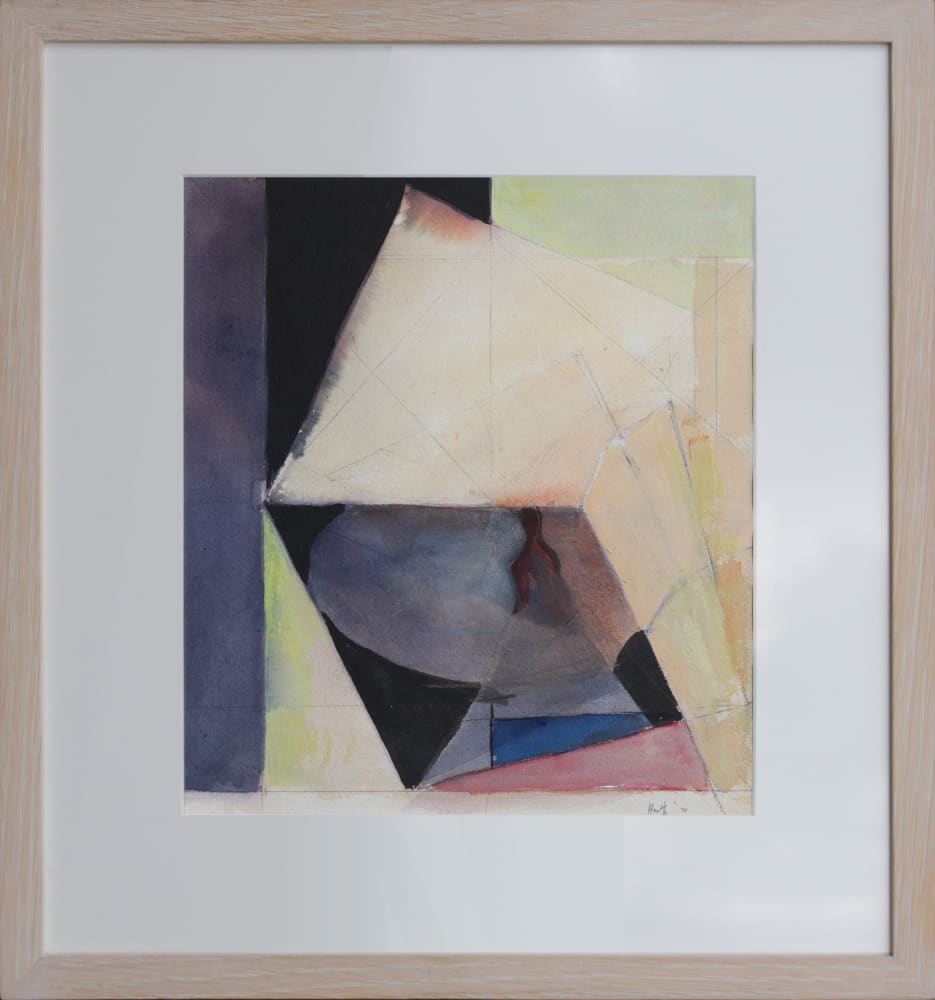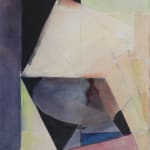
Composition 1978 by Adrian Heath in frame
Adrian Heath British, 1920-1992
Framed: 48 x 44.8 cm (18.9 x 17.6 ins)
Provenance
Acquired from the artist's estate by the previous owner.
From the start of the 1950s Heath explored the use of shape and dynamic symmetry to provide some control to his process of painting. He steered clear of a commonly observed approach to abstract art wherein the artist lets loose his emotions on canvas, “the painterly excesses of unbridled self-expression”, believing that to be a self-fulfilling dead end. In his own account in 1954 in ‘Nine Abstract Artists’, he wrote “.. the thing of interest is the actual life of the work: it’s growth from a particular white canvas or board. I use the word particular to stress, for me, the importance of the size and format of the area to be painted, as it is from its first sub-division that my picture grows. The problem is to exercise some logical or objective control on its gradual evolution. It is the process, the method of development that is the life of the painting, and this that absorbs my interest rather than the attractions of any particular form".
Like many of his works, the present painting can at first appear unfinished, but that is not the case. The entire surface is filled with the artist’s pencil lines creating basic forms, thence dissected to create more complex shapes. However, not all the forms are infilled with colour. It is the artist’s intention to leave evidence of his progress in the final work. Of when to stop, of the challenge of deciding when a work is finished Heath wrote, “When should this process come to a halt? When is the painting or construction finished? One can curtail its development at an early stage and concentrate on a few basic and simple relationships that can be so profoundly satisfying. Ultimately, can a final form be achieved in a painting any more than it is in a natural growth such as a tree or a flower? Each successive state is complete in itself, but the most lasting satisfaction is obtained from the one that gives us the clearest insight into the structural process that has been involved”.
The present work is a particularly satisfying example of Heath giving us that clear insight into his structural and painting process.
-
 Adrian HeathDivided: Red and Orange, 1963Oil on canvas173 x 183 cm (68.1 x 72 ins)
Adrian HeathDivided: Red and Orange, 1963Oil on canvas173 x 183 cm (68.1 x 72 ins)
Framed: 179 x 189 cm (70.5 x 74.4 ins) -
 Michael CanneyUntitled, Lost painting 6, c. 1985Alkyd oil on canvas fixed to board67.5 x 50.5 cm (26.6 x 19.9 ins)
Michael CanneyUntitled, Lost painting 6, c. 1985Alkyd oil on canvas fixed to board67.5 x 50.5 cm (26.6 x 19.9 ins)
Framed: 85.8 x 68.3 cm (33.8 x 26.9 ins) -
 Michael CanneyBlue and Brown CompositionAlkyd oil paint on board29.5 x 29.5 cm (11.6 x 11.6 ins)
Michael CanneyBlue and Brown CompositionAlkyd oil paint on board29.5 x 29.5 cm (11.6 x 11.6 ins)
Framed: 45.6 x 45.6 cm (18.0 x 18.0 ins)







